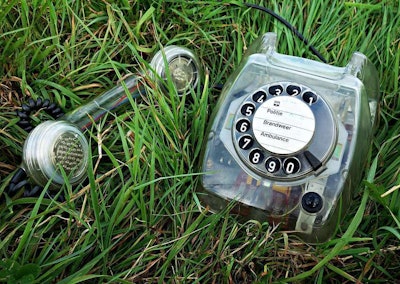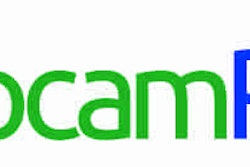
Last spring as I enjoyed a fun whiffle ball game with my kids and my neighbor’s kids, I noticed a landscaping salesperson marching from house to house to knock on doors. I dreaded when it was time for the rep to interrupt my family time in order to chat with me about a service that, at the moment, was the last thing on my mind.
Certainly, give credit to the efforts of the cold-calling salesperson; however, is this really the most effective way to engage my interest? The same can be applied to a telephone cold call. When I do finally reach the all-important decision maker, am I interrupting his or her workday? How does my interruption reflect on me and my company when the person on the other end of the phone does not know me from a can of spray paint?
Fortunately for sales professionals, technology is leading us to a warmer first call or first contact with a prospect. Social media – Facebook, LinkedIn and Twitter, are helping transition to a warmer approach. When you combine social media outreach with networking opportunities, speaking engagements and published subject-specific articles, you can approach prospects with more credibility.
Here are suggestions to help replace the traditional cold call with a much warmer introduction with your prospect.
Social media and published articles
As with anything, practice makes perfect. When used correctly, Twitter, Facebook, LinkedIn and several other channels can help you reach prospects that would have shut you down in the past. The trick with social media is to inform and educate the audience.
It will be far less effective if the post comes across as simply another advertisement for a product or service. Put a schedule in place that allows you to consistently post relevant industry-specific articles to help solve a business challenge. Consider the talents and knowledge of your own staff to generate the content. Ask a subject matter expert from your own staff to write a brief article that the company may publish and post on social media.
Build relationships with newspapers and media publications, as these publications are looking for relevant content to publish (both in print and online). Create a library of articles – content you can publish time and time again. Many trade magazines and local newspapers have audience reach through social media and email addresses.
Talk with the trade magazines and newspapers about the cost of reaching target audiences on your behalf. You often have the ability to track who opens and reads your articles. Include an online form for the reader to complete that includes their contact information.
When you follow-up with them, they are already familiar with your company through the article. A list of prospects who actually read your content and took the time to submit their contact information is likely beginning to be in “buyer mode.” Now all you have to do is strike while the iron is hot.
Social events
This could be part social and part educational. Ask your residential customers if their neighborhood has a civic association. Civic associations represent interests of a certain neighborhood or plan. Consider hosting a meet and greet with neighborhood civic associations.
You could have appetizers and drinks and help answer landscaping questions. Many civic association meetings are held at a local restaurant, which logistically, makes things easy to plan. This is an excellent opportunity to meet potential customers. In fact, you could approach any neighborhood civic association, even neighborhoods where you may not have a customer.
This will get you in front of more people. Perhaps this will be a way to gain business in some neighborhoods that fit your customer profile. It is a much warmer way of meeting people than cold calling or mailing a brochure.
Finding the connection
Often you know somebody fits the profile of the type of customer you want. In the past, you may have blindly mailed a brochure or dropped by to knock on their door. In my case, I would pick the phone up and do a telephone cold call. But ask yourself, “How can I find a connection with this prospect before I approach them?”
Use the internet to find a connection. Search the customer. Are they connected to people you know on LinkedIn? Do they belong to the same professional associations that you do? Is the person or business using a supplier or a service provider that you have a relationship with? Perhaps the prospect went to the same school you did. The more you do it, the better you will become at quickly finding a basic connection. It may take 10-15 minutes, but this time investment will result in the prospect being more willing to listen to you rather than turn you away.
Lost customers
One source for warm leads that is often avoided is lost customers. Swallow your pride, and let them know you want another opportunity to earn their business and respect. Time erases a lot of memories. Even if a previous customer had something go wrong with your product or service, people may not be having a great experience with your competitor.
Some former customers are willing to give another chance if you can help them understand how you would do things differently this time around. While you need thick skin to reach out to lost customers, you will gain more business this way than by contacting someone who is not at all familiar with your service or product.
Keep in mind, you may also contact prospects who selected a competitor’s proposal instead of yours. Though you never did business with them, they already are familiar with you. It’s already a warm lead.
Customer referrals
Do you have a regular rotation on your calendar to ask your customers who they know that could use your service or product? Customer referrals will be easier to get if you continue to build the relationship after that initial sale.
If you are not in frequent contact with a customer, do not expect this customer to open up with referrals. Referrals are a result of trust and relationships. Also, be sure to remind your customer that you are not looking for immediate customers. Instead, guide your customer to discussing people they know that may potentially buy from you.
Do not limit your customer into thinking you want a lead from someone who is buying right now. This will limit the number of warm leads shared with you. Think long term. At some point, the prospect will have the need, and you can establish a relationship ahead of time.
This gives you an opportunity to establish value over price. If the prospect is already in buying mode, the price will be the driving factor. In this case, the prospect is in more control of the sales process. You want to be in the driver’s seat with the process.
EDITOR’S NOTE: This was written by Paul Kowal. Kowal is the Partnership Coordinator at LandOpt, a business that works with independently-owned landscape contractors across the U.S., helping them increase profitability, cash flow and revenue. To learn more, visit: www.landopt.com.











